#canadian arctic expedition
Explore tagged Tumblr posts
Text
Happy Karluk Rescue Day! The survivors of the Karluk were rescued from Wrangel Island on this day 109 years ago. The first rescued were Maurer, Munro, and Templeman, who were rescued from the smaller camp at Rodger's Harbour, a few miles from the others.



Immediately after being rescued, all three of the men from Rodger's Harbour asked for cans of sweetened condensed milk.


The rest of the survivors saw the ship shortly thereafter, right when they were getting ready to sit down for a meal. They did not know that the three from Rodger's Harbour had already been rescued, or that they were about to be reunited with Captain Bartlett


These photos are from when all the survivors, including Captain Bartlett, were reunited on the Bear and had a chance to clean up. By and large these people were not friends and were VERY tired of each other, but they were all smiles for the rescue photos (except Fred Maurer and Clam Williams in the group photo for some reason? So pensive...)



The Karluk set sail with a crew of 25. Only 14 of them came home, and they survived thanks to the selfless actions of Captain Bob Bartlett and Kataktovik, his often-overlooked Inuit companion on the journey to Siberia. Stefansson had written them off as dead, but thanks to Bartlett, 14 of them got another chance at life. Not all of them made wise choices going forward (FRED), but they made it home to their families, no thanks to Stef.
If you made it this far, thanks for reading about my boys!
All screenshots and quotes are from The Ice Master by Jennifer Niven, all photos are in the public domain and were accessed through the Library and Archives Canada online portal
71 notes
·
View notes
Text

12 June 2024
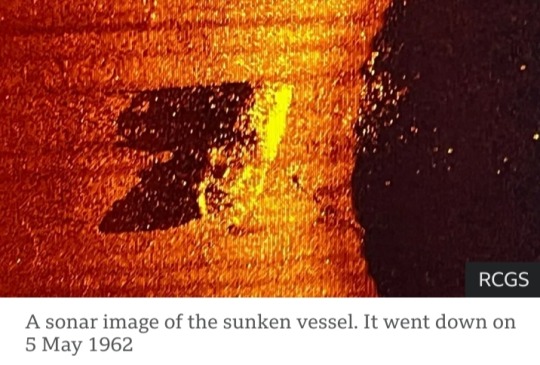
Wreck hunters have found the ship on which the famous polar explorer Ernest Shackleton made his final voyage.
The vessel, called "Quest," has been located on the seafloor off the coast of Newfoundland, Canada.
Shackleton suffered a fatal heart attack on board on 5 January 1922 while trying to reach the Antarctic.
And although Quest continued in service until it sank in 1962, the earlier link with the explorer gives it great historic significance.
The British-Irish adventurer is celebrated for his exploits in Antarctica at a time when very few people had visited the frozen wilderness.
"His final voyage kind of ended that Heroic Age of Exploration, of polar exploration, certainly in the south," said renowned shipwreck hunter David Mearns, who directed the successful search operation.
"Afterwards, it was what you would call the scientific age. In the pantheon of polar ships, Quest is definitely an icon," he told BBC News.
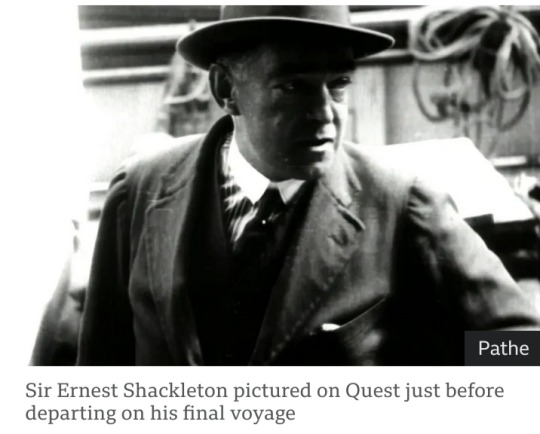
The remains of the ship, a 38m-long schooner-rigged steamship, were discovered at the bottom of the Labrador Sea on Sunday by a team led by The Royal Canadian Geographical Society (RCGS).
Sonar equipment found it in 390m (1,280ft) of water. The wreck is sitting almost upright on a seafloor that has been scoured at some point in the past by the passing of icebergs.
The main mast is broken and hanging over the port side, but otherwise, the ship appears to be broadly intact.
Quest was being used by Norwegian sealers in its last days. Its sinking was caused by thick sea-ice, which pierced the hull and sent it to the deep.
The irony, of course, is this was the exact same damage inflicted on Shackleton's Endurance - the ship he used on his ill-fated Imperial Trans-Antarctic Expedition of 1914–1917.
Fortunately, the crews of both Endurance, in 1915, and Quest, in 1962, survived.
Indeed, many of the men who escaped the Endurance sinking signed up for Shackleton's last polar mission in 1921-1922, using Quest.
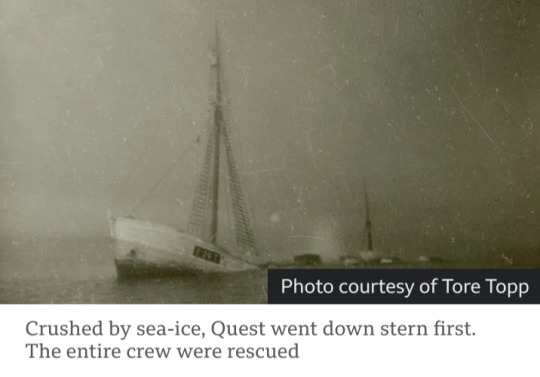
His original plan had been to explore the Arctic, north of Alaska, but when the Canadian government withdrew financial support, the expedition headed south in Quest to the Antarctic.
The new goal was to map Antarctic islands, collect specimens and look for places to install infrastructure, such as weather stations.
Shackleton never made it, however, struck down by heart failure in the Port of Grytviken on the British Overseas Territory of South Georgia, the last stop before reaching the White Continent. He was just 47 years old.
After his death, Quest was involved in other important expeditions, including the 1930-31 British Arctic Air Route Expedition led by British explorer Gino Watkins, who himself tragically died aged 25 while exploring Greenland.
Quest was also employed in Arctic rescues and served in the Royal Canadian Navy during WWII, before being turned over to the sealers.

The RCGS team members carried out extensive research to find Quest's last resting place.
Information was gathered from ship's logs, navigation records, photographs, and documents from the inquiry into her loss.
The calculated sinking location in the Labrador Sea was pretty much spot on, although the exact co-ordinates are being held back for the time being.
A second visit to the wreck, possibly later this year, will do a more complete investigation.
"Right now, we don't intend to touch the wreck. It actually lies in an already protected area for wildlife, so nobody should be touching it," associate search director Antoine Normandin said.
"But we do hope to go back and photograph it with a remotely operated vehicle, to really understand its state."
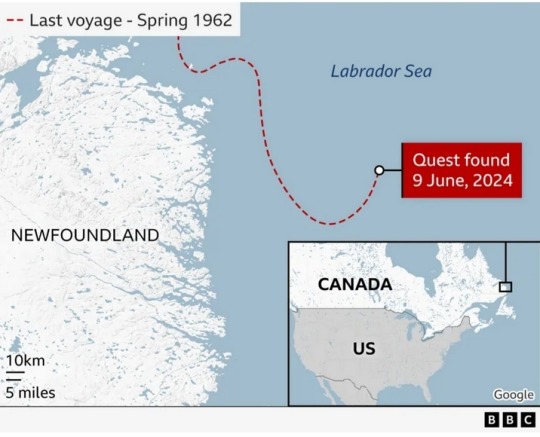
Alexandra Shackleton is the explorer's granddaughter and was patron to the RCGS survey.
"I was thrilled, really excited to hear the news; I have relief and happiness and a huge admiration for the members of the team," she told BBC News.
"For me, this represents the last discovery in the Shackleton story. It completes the circle."
The explorer continues to spark interest more than a century after his death.
Hundreds of people visit his grave on South Georgia every year to pay their respects to the man known by his crews simply as "The Boss."
"Shackleton will live forever as one of the greatest explorers of all time, not just because of what he achieved in exploration but for the way he did it, and the way he looked after his men," said David Mearns.
"His story is timeless and will be told again and again; and I'm just one of many disciples who'll keep telling it for as long as I can."

��
Sir Ernest Henry Shackleton CVO OBE FRGS FRSGS (15 February 1874 – 5 January 1922) was an Anglo-Irish Antarctic explorer who led three British expeditions to the Antarctic.
He was one of the principal figures of the period known as the Heroic Age of Antarctic Exploration.
#Ernest Shackleton#Quest#Newfoundland#Canada#Antarctic#polar explorer#shipwreck hunter#shipwreck#Labrador Sea#The Royal Canadian Geographical Society (RCGS)#Endurance#1930-31 British Arctic Air Route Expedition#Gino Watkins#sonar instrument#Heroic Age of Antarctic Exploration#Sir Ernest Henry Shackleton#British expeditions
65 notes
·
View notes
Text
Captain James Fitzjames has been identified!! And surprise, surprised he was cannibalized.
13 notes
·
View notes
Text
I think it's telling about the nature of the actual events The Terror is based on that the Tuunbaq isn't even the most batshit thing going on in it.
#history#shipwrecks#the terror amc#tbh I don't get the hate people have for the Tuunbaq?#maybe it's just because I interpreted it as being a personification of the Arctic itself#although I do think they should've stuck closer to its design in the book because holy hell that thing was freaky#anyway i think the Lost Franklin Expedition is one of those things that's so ridiculously over-the-top#that if it was a fictional story people would accuse it of being unrealistic#like#their food and water were contaminated with lead#the commander of the expedition was their SIXTH pick#and the rest were dismissed for reasons ranging from “just got married” to “being Irish”#they probably all died of some combination of exposure starvation disease AND SCURVY#on top of suffering from lead poisoning and god-knows-what-else#we didn't find the wrecks for over a century because the British were too high and mighty to listen to the natives#and then the Canadians found the wrecks in less than a decade by just asking the Inuit nicely#and they also named their ships Erebus and TERROR#at some point it stops being disturbing and loops into comedy through the power of sheer absurdity
3 notes
·
View notes
Text
I think the thing I like most about The Sea, as, like... a setting or a concept, is that in its vastness, its untameable nature, its unknown secrets, you have a lot of historically documented events that sound more like tales out of mythology and folklore.
Take, for instance, the fate of the Victory Expedition of 1829.

The Victory expedition was a private polar expedition led by veteran British explorer Captain John Ross. Twenty-three men set sail for the Canadian Arctic on the steamship Victory, but when the ship became trapped in the polar ice, there was no way to free it. The crew spent four years in the frozen north, surviving on rations from the wreck of a previous polar exploration ship.
Eventually, twenty survivors packed their belongings into small boats and hauled them over ice towards open water. And in that open water, there was a ship, the whaler Isabella of Hull.*
The Isabella's crew couldn't believe their eyes, because, as they told the Victory's survivors, "Captain Ross has been dead these two years."
And if that wasn't strange enough, the (very much alive) Captain Ross of the Victory had, on a previous Arctic expedition, been captain of the Isabella.

*Side note: the more I read about the Age of Sail, the more I realize that wherever official Explorers™ from a given Western nation go, their whalers have already beaten them there. Sometimes that's even the reason the explorers were sent.
#polar exploration#sea stories#arctic exploration#victory expedition#sir john ross#james clark ross#19th century#age of sail#nautical history#maritime history#naval history#survival story#maritime disasters#maritime#nautical#the terror#the terror amc#franklin expedition#(adjacent)#sources for this post are the RMG website and the Gillian Hutchinson Franklin Expedition book
579 notes
·
View notes
Text
it's because you're always on those damn canadian arctic expeditions
270 notes
·
View notes
Text
Some of my favourite things from my visit to the national archives today!!!


Fitzjames’ drawings on a letter he wrote to Col. Edward Sabine on 3rd June 1845 (click on the left one to see the whole thing)
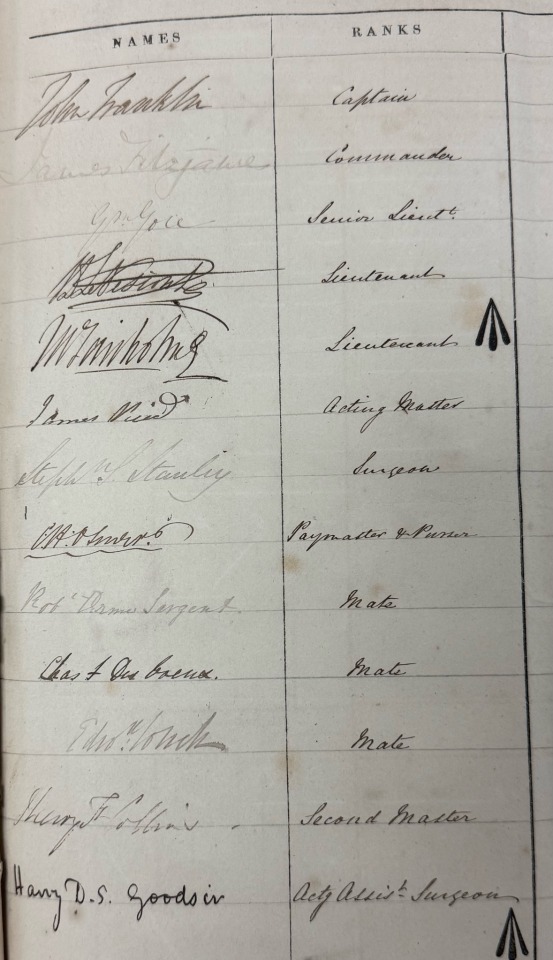

Signatures of the officers on Erebus (left) and Terror (right) in the muster book


How similar John & Thomas Hartnell’s signatures are 🥹

Hickey’s name in the muster book immediately after Gibson’s


List of the British names of places in the Canadian Arctic with the Inuit counterpart on a map showing a route taken by a rescue ship while looking for the Franklin Expedition (I can’t remember which one)
#tarra speaks#the terror#well it’s terror adjacent#franklin expedition#national archives#james fitzjames#hms terror#hms erebus#john hartnell#thomas hartnell#inuit
182 notes
·
View notes
Text
40 years ago today, on August 10, 1984, a scientific team led by anthropologist Owen Beattie arrived on Beechey Island in the Canadian Arctic. They intended to exhume and autopsy the three members of the Franklin Expedition buried there. They spent that first day setting up temporary living quarters and exploring the area. In a little over a week, they would come face to face with the preserved remains of John Torrington…
#john torrington#franklin expedition#the 40th anniversary of John Torrington's exhumation#yes i'm going to be making a big deal about this
227 notes
·
View notes
Text

Today, in the 11th door, a secret is hiding and perhaps it will be revealed at some point. HMS Erebus in the eternal ice will maybe the key….

Just a tiny bit of her history:
Our Erebus was a warship and research vessel of the Royal Navy in the 19th century. The Erebus belonged to the Hecla class of bomb vessels. These were ships designed to bombard the coast with heavy mortars. It was named after Erebos (Latinised Erebus), the god of darkness in Greek mythology.
The ship became famous for its participation in James Clark Ross's expedition to the Antarctic and John Franklin's last expedition to the Canadian Arctic. It was previously thought that the ship was abandoned by its crew in 1848. The presumed sinking site of the ship and the other ship of the expedition, the Terror, off King William Island was declared a National Historic Site of Canada in 1992. The wreck of the ship was found in September 2014 more than 100 kilometres south in Wilmot and Crampton Bay off the Adelaide Peninsula
#naval history#naval artifacts#hms erebus#advent calendar#day 11#there will be an extra post about her soon#age of sail#19th century#arctic expeditions#ross expedition#franklin expedition
97 notes
·
View notes
Note
For the cold boys ask please tell me how you feel about Ned Little ❤️❤️❤️ Thank You!
THANK YOU FOR ASKING!!!
I am so normal about him you can't imagine how normal I am about that man.
Anyways:
First Impression: I think almost everyone has the same experience with this one: when you first watch the show you don't really register him for the first five episodes or so and then you either love him or are very much neutral about him. I vaguely remember the scene where he's standing next to Jopson looking like a kicked dog while Crozier yells at him and I think that's when I took note of him like "ohh poor boy let me give you a hug :(" I really fell for him in the second half of the season (first mainly bc hes pretty. Im a simple woman sometimes and im not afraid to admit it) and I cannot stress this enough how much the last scene where Crozier finds him half frozen with the chains on his face has altered my brain chemistry. That was the fr the point where I was like "okay so I'll never be normal again EVER huh"
Impression Now: I love him. I love him so so much on so many layers. For one I need him biblically bc I believe I can fix his ass and his sad energy and big cow eyes have bewitched me body and soul. Matthew McNulty was born to sport mutton chops and look increasingly disheveled while on a death march in the canadian arctic. But I can't put into words how much I relate to him. I am him, he is me. Genuinely if I was put on that stupid expedition in his place I would've made all the same (bad) decisions. I can literally name two other characters in media I relate to and those are Kat from Euphoria (only the first season version and I think if I watched the show now I would throw her off this list) and Connel from Normal People (him just,, big time). They just don't make characters that messy, pathetic and sad very often!! Or I'm not watching enough tv to find them but when I saw Ned throughout the season I was like "wow I relate to him so much and idk what that says about me". I feel like I went on a tangent there but I love him he is such a dear. He tried so so hard to do right and keep things under control bc he hates chaos but he was just so overwhelmed and had to deal with Croziers shit for way too long (I'm trying to sound smart rn bc people have very nuanced but sometimes also kinda weird takes on his character. Believe me I see him as more than sad wet puppy man but I don't have the words in the english language to express that)
Favorite Moment: Any scene he's in ever? Duh?? No but if I had to pick one I'd say the dundy intervention when he finally tries to put a foot down to rescue Crozier but they all just dismiss him. The way his eyes water. I. Mmh. I think I'm obligated to name his last scene as well bc that one makes me cry everytime even if I just see a gif of it, it's just so haunting and so so sad
Idea For A Story: Oh. Uhmmmmm. I'm really not a writer so I can't come up with anything cool on top of my head except let Ned be happy and comfy and warm. Tuck him into bed and give him soup. That's all
Unpopular Opinion: I can't really tell what's an unpopular opinion bc I've seen basically every take ever on him from "he is a pushover how did he even get his job" to "he's actually a meanie with big time anger issues" so. Maybe that I think he would've been a good lieutenant with a different captain on a more chill cruise. He'd do very well keeping order and the respect of the crew if he didn't have to be the doormat and errands boy for his alcoholic captain while starving in the arctic. I'd dare say 99.9% of life on a ship was more chill than the franklin expedition so maybe he wasn't the best lieutenant ever but he would've done a good job if the stakes weren't THAT high
Favorite Relationship: Started as a Joplittle stan, became a Sojoplittle truther and now my favorite is Solittle. I love my two dog boys, I love how they parallel each other (they were narrative foils your honor). But honestly anything goes, everyone deserves a bite out of nedward <3
Favorite Headcanon: That animals love him. Saw that on my feed a few days ago and yeah, agreed. He's definitely a cat person and they just flock towards him (extended hc that jirv loves animals so so much but they just hate him for some reason. So when the ships cat sneaks in during meetings jirv tries to get her to come towards him but the cat's like "ew no church boy" and jumps into Ned's lap who pets her but also prays he won't get yelled at by Crozier for this)
#hes just my special boy. my sweet cheese even#oh nedward little we are really in it now#the terror#the terror amc#edward little#ned little#frogger says stuff
24 notes
·
View notes
Text
In my ongoing quest to make all of you read about my pet expedition the Karluk, I have assembled this collection of relevant images and presented them without context. Intrigued? You should be! Pick up a copy of The Ice Master or Empire of Ice and Stone and learn the whole story! 😘
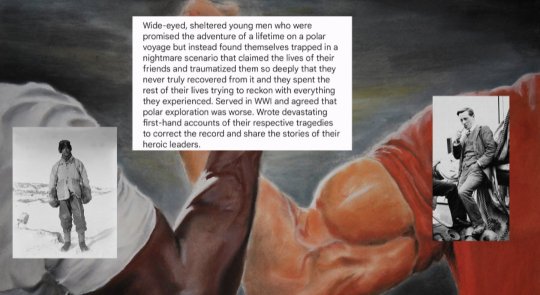




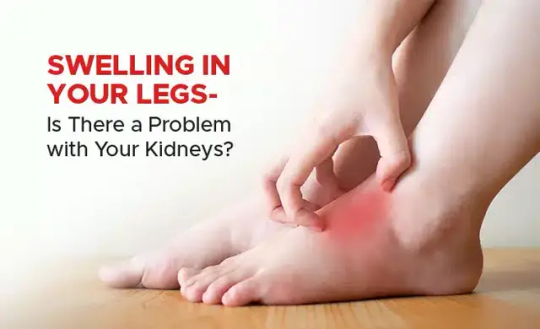

45 notes
·
View notes
Text




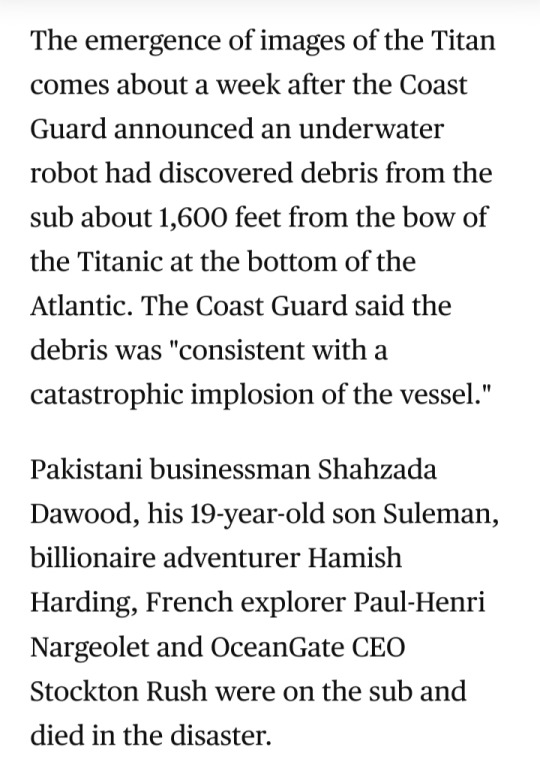
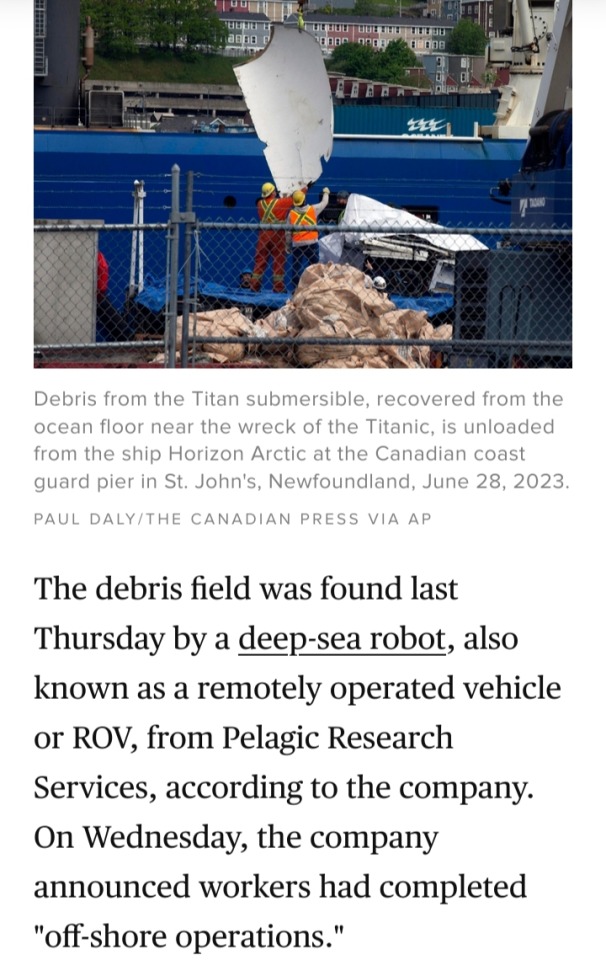
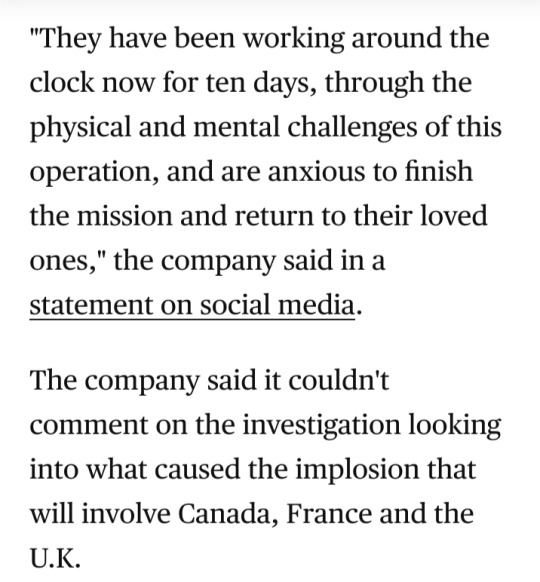
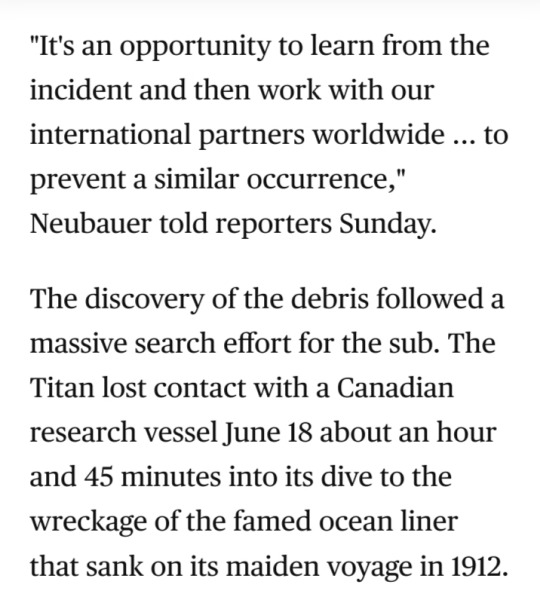


#Titan submersible#Titan sub debris#catastrophic implosion#Titanic#Titanic voyage#Canadian Press#Reuters#Newfoundland#Canada#US Coast Guard#Horizon Arctic#Pelagic Research Services#deep-sea robot#off-shore operations#OceanGate Expeditions#US Navy#wreck
7 notes
·
View notes
Text
I was on an expedition to the Canadian arctic for some high school class. We were traveling by dogsled and sleeping in igloos and Brian David Gilbert was one of my classmates.
#dream#canada#arctic#expedition#school#high school#class#dogsled#igloo#brian david gilbert#classmate
348 notes
·
View notes
Text


Cans from Captain Sir John Franklin’s lost expedition (1845) still on the ground of Beechey Island in the Canadian Arctic. Stones were put inside the cans to prevent their dislocation by the wind.
The cans were welded with lead as canning food was a new invention. Unfortunately, they didn't realise the toxicity of lead at that time (or did and the cannery was cheap), therefore some of their bad decision making was due to poor brain function.

Some of it was due to being convinced that the Northwest Passage exists. Which, it does now, because of global climate change. But like Henry Hudson before him, Franklin learned that you can't get there from here the cold, hard way.
youtube
Anyway, here's Nathan Rogers (son of Stan) singing "Northwest Passage."
#franklin expedition#hms terror#canada#exploration#northwest passage#stan rogers#Youtube#the terror season 1
29 notes
·
View notes
Text
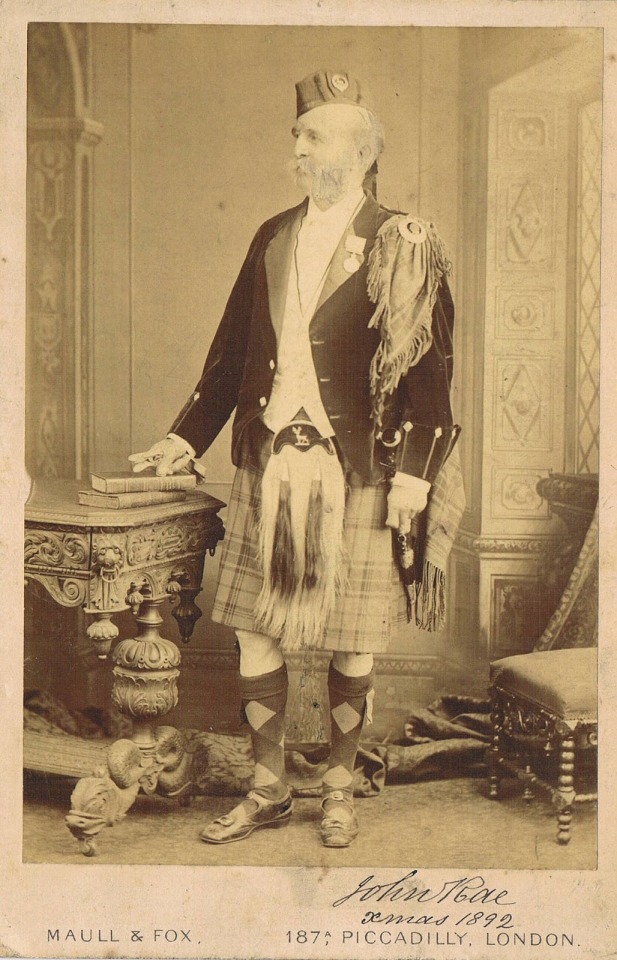



On 30th September 1813 John Rae, surgeon, trader and Canadian explorer, was born.
Born n at Hall of Clestrain, Orphir, on the Orkney Islands, at the age of sixteen he began the study of medicine at Edinburgh University and in 1833 he was appointed surgeon to the Hudson’s Bay Company ship Prince of Wales on its annual voyage to Moose Factory, and was resident surgeon there from 1835 to 1844.
Between 1846 and 1854 John Rae made four voyages of exploration to the Arctic, surveying and charting many miles of newly discovered coastlines. In recognition of this the Royal Geographical Society awarded him the Founder’s Medal in 1862. Two of these expeditions had been sent out to search for Sir John Franklin; the search of 1853 resulted in the discovery of Franklin’s fate.
Information from the Inuit given to Rae showed that Franklin’s men had all perished and the bodies showed signs of cannibalism. This report made Rae unpopular and his achievements were rather ignored. Nobody wanted to believe that men would be capable of eating the flesh of humans, even in an attempt to save their own lives, it wasn’t as if they killed their own people.
In 1860 he married Catharine Jane Alicia, daughter of Major George A. Thompson, Ardkill,Derry, Ireland, but his days at The Hudson Bay Company were far from over, Rae rejoined them 1864 to survey the route from Fort Garry to Victoria, and at both points accumulated material for the construction of a continental telegraph. The material he collected at Winnipeg was utilized in 1871 in linking up Manitoba with Eastern Canada.
In October 1882 he revisited Winnipeg, giving an address to the Manitoba Historical Society on his Arctic explorations and on the value of Hudson Bay as a commercial route. In 1880 the Royal Society elected him a Fellow. He was the author of many journals and papers and his name is perpetuated in many place names in the Canadian Arctic.
Rae was another Scot who was something of a polymath, and his writings on economics were admired by John Stuart Mill. He wrote A Narrative of an Expedition to the Shores of the Arctic Sea in 1846 and 1847 and Report of the Proceedings of the Arctic Searching Expedition.
Rae's legacy is an important one. He is thought to have mapped around 1,750 miles of the Arctic coast. His willingness to learn from the indigenous people that he met on his travels sets him aside from many of his contemporaries.
The Victorian wrong was righted when the simple plaque for the Orcadian surgeon turned explorer Dr John Rae was unveiled at Westminster Abbey in 2014, his writings have been accepted as accurate since the days of the doubters.
He spent his last years in London, where he died on 22 July 1893, his body was taken by steamer to Kirkwall for burial at St Magnus Cathedral, a memorial inside to Rae shows him sleeping on the ground, covered with a skin blanket. Nearby are his gun and a book.
16 notes
·
View notes
Photo

Fête des baleines à Point Barrow Alaska, 1923. Photo by Leo Hansen (1888-1962). "The Nalukataq consists of the dancer maintaining the most graceful position when propelled into the air from a trampoline." "The catalog Inuit features early twentieth-century portraits from the archive of the writer-journalist Victor Forbin: half of the 350 photographs they had bought in 2019, on a whim, from Yves Bouger, a well-known gallery owner and bookseller based in Granville. They originally belonged to Victor Forbin (1864–1947), who thought himself an “adventurer,” and who assembled a personal iconography to illustrate his articles, translations, and books (his first novel, Les Fiancées du Soleil, came out in 1923). When they were confronted with “this vanished world,” the Jacquiers had known nothing about the Arctic or about polar expeditions, such as the Canadian Arctic Expedition led by the ethnologist Vilhjalmur Stefansson (1879-1963), between 1913 and 1918, and the 5th Thule Expedition led by the Danish explorer Knud Rasmussen (1879–1933) between 1921 and 1925. Although they could see at once that, by their very subject, the photographs were of great value, and not just sentimental, they were yet to document their discovery. This they did during the first months of lockdown, consulting online libraries and Northern museums, moved by these portraits of the Inuit, and the “reciprocal gaze” exchanged between the photographed and the photographer. “It is true, we were touched by this gaze devoid of exoticism,” emphasized Philippe Jacquier, “by the presence of the Inuit, their power in the endless white landscapes. These photos are more than a century old, and yet they seem so close… Those who took them understood that photography is an indispensable tool.” https://www.instagram.com/p/Cp3NPKjth47/?igshid=NGJjMDIxMWI=
258 notes
·
View notes